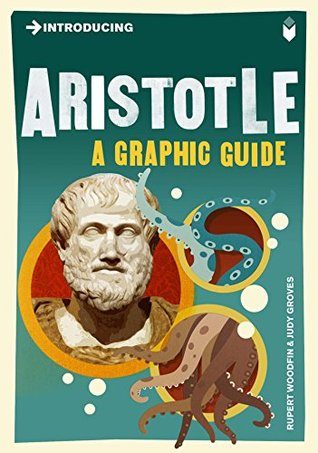More on this book
Kindle Notes & Highlights
Started reading
December 1, 2018
The poet Thomas Gray said that reading Aristotle was like eating dried hay. This is something of an exaggeration, but his writing can be hard work. It is generally agreed that these “esoteric” (or “acroatic”) works are actually lecture notes, the working documents that he used on a daily basis for his teaching.
Aristotle’s philosophical method was to find a puzzle in the area that he was investigating, called an aporia, then work through to a solution.
The works are known as treatises, and it is likely that Aristotle’s papers were gathered together and put into these treatises by others.
produced by Immanuel Bekker in 1831,
The central thrust of the writings is that the world exists as it seems to exist, and can be understood by ordinary people with the right abilities and training.
Can the external world be described objectively, as it really is, or are all our descriptions of the world rooted in our own personal experience? We can describe the argument as between the realists and the relativists (or anti-realists). Today similar debates go on between scientists, who are the realists, and postmodernists, who are the relativists.
These views were to give rise to the Sophist movement, to which Socrates, Plato and Aristotle were deeply opposed, because the Sophists rejected the idea of ultimate truth.
Plato did see the ordinary, everyday world as inferior and illusory. For him, the things that really existed were the forms. These were rather like perfect and eternal templates from which were copied all of the things that we see around us. The forms were not physical, whereas the copies were.
The issue was concerned with both what exists (ontology) and the extent to which we can know what exists (epistemology).
Aristotle realized that if there is a world, and if the world is to be comprehensible to us, then we have to have full knowledge of what it is that is in the world. It is as if the world is a box filled with things, or substances, to use Aristotle’s word.
Aristotle wanted to find a middle way, avoiding both mysticism and reductionism.
Aristotle also realized that we would need to make a careful distinction between a description of something and its definition. He believed that when we describe something we are not really saying anything about what it really is, we are simply marking it off from other things. An explanation of the real nature of something must entail some sort of convincing definition, rather than just a description.
Therefore, thought Aristotle, we need to be able to identify an essential quality of something, some absolutely central feature that makes it what it is – its ontology – rather than simply marking it off from other things.
Aristotle begins The Categories, in a very characteristic way, by trying to work out the meaning of the verb “to be”.
When we say that something exists, what do we mean by that term? Aristotle thought that ordinary language does actually reflect
the way in which the world is p...
This highlight has been truncated due to consecutive passage length restrictions.


